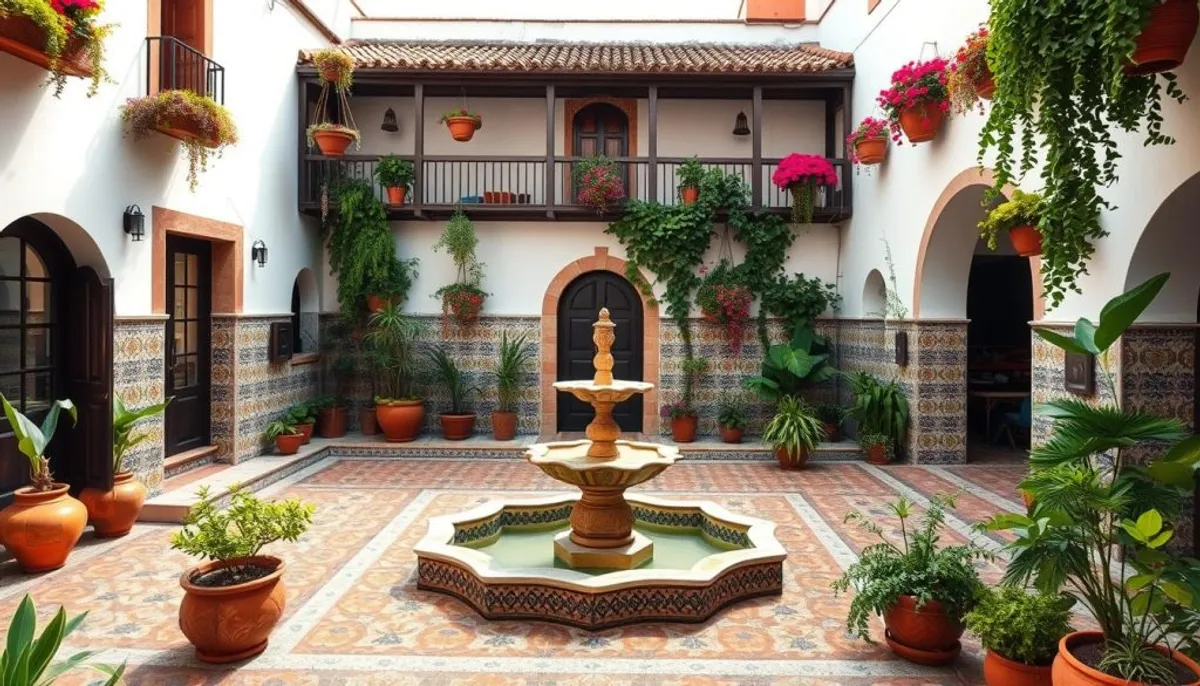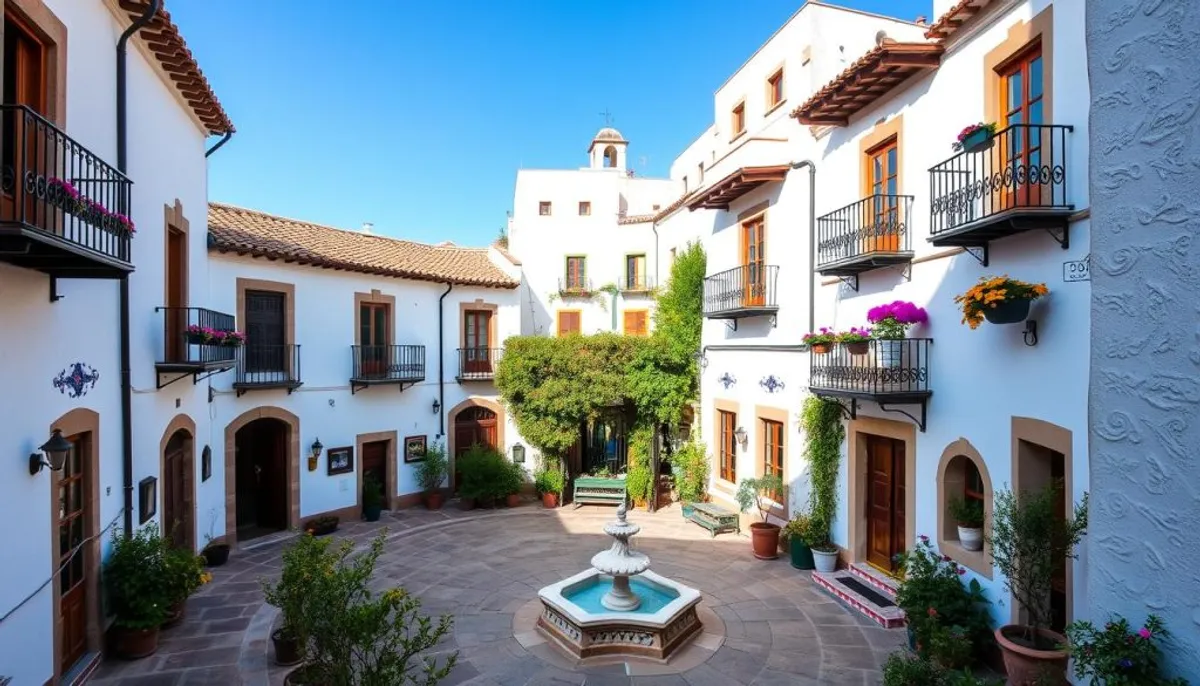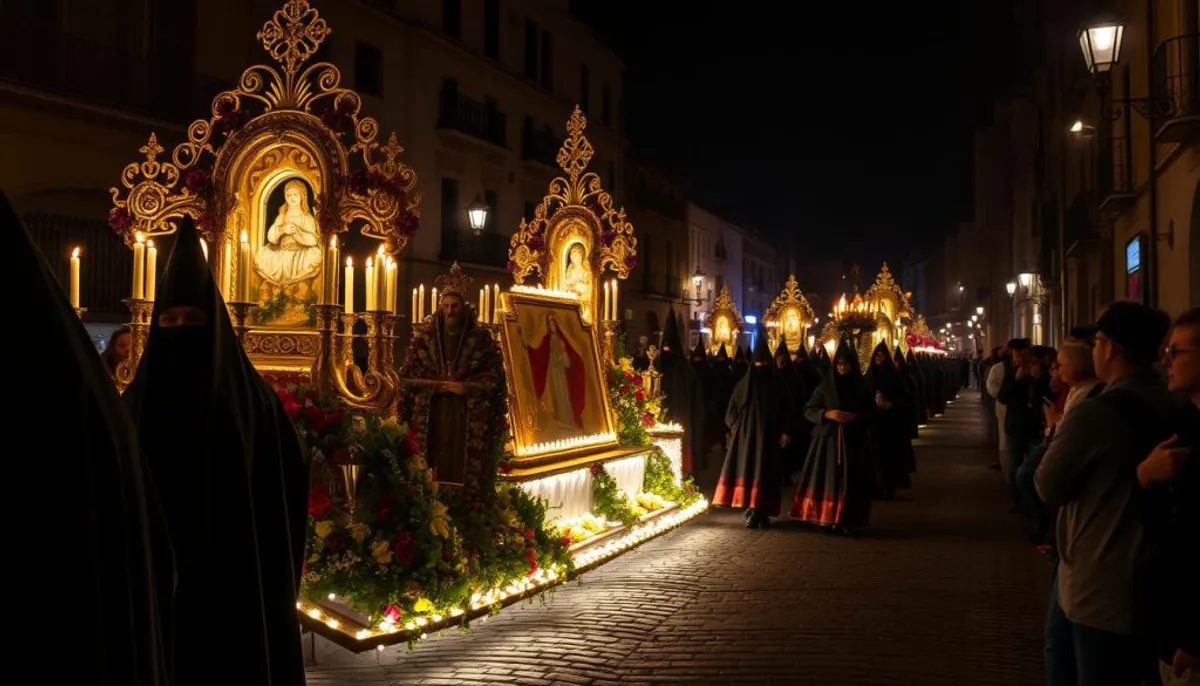Andalusia, a region in southern Spain, is distinguished by its rich and diverse Andalusian heritage. With 8.5 million inhabitants over 87,268 km², it is home to invaluable cultural treasures. Its cultural heritage, resulting from a Moorish, Christian, and Jewish fusion, offers captivating folklore.
Wonders like the Alhambra in Granada, a symbol of Islamic art, coexist with works from the Renaissance and Baroque. The Mosque of Cordoba and the Giralda of Seville illustrate this architectural uniqueness. These sites, recognized by UNESCO, attract visitors from all over the world.

Andalusian traditions manifest through various festivals. From bullfights to flamenco festivals, the summer is lively with these customs. Local craftsmanship, famous for its ceramics and textiles, preserves ancestral know-how.
From the Guadalquivir Valley to the peaks of the Sierra Morena, Andalusia presents a diversity of landscapes. Its Mediterranean forests, olive trees, and almond fields define its identity. This land, the cradle of artists like Velázquez and Picasso, continues to inspire with its beauty and cultural richness.
What culture in Andalusia: a unique millennial heritage
Andalusia is a true cultural treasure, shaped by centuries of varied influences. This region in southern Spain showcases an unmatched blend of Andalusian art and ancestral traditions. This intangible heritage is the result of a rich and complex legacy.
The mosque-cathedral of Cordoba illustrates this cultural fusion. This architectural monument bears witness to the Islamic and Christian influences that have marked the region's history. Flamenco festivals, which animate the year, celebrate the Andalusian soul through dance and music.
Recent archaeological discoveries enrich our understanding of this heritage. The sword “Excalibur,” dating from the 10th century and discovered in Valencia, reveals the Islamic origins of some artifacts. Measuring 45 centimeters, this weapon illustrates the refined craftsmanship of the Andalusian caliphate era.
The genetic diversity of Andalusians also reflects this cultural mixing. Studies on the provinces of Huelva and Granada have revealed a varied genetic heritage. This heritage reflects the historical migrations between the Iberian Peninsula and North Africa. This genetic wealth underscores the importance of cultural exchanges that have shaped Andalusian identity over the centuries.
Traditional Andalusian architecture
Andalusian architecture is a mirror of the region's rich and complex history. It bears witness to Moorish influences and Christian traditions, with each detail telling a unique story. This cultural richness is palpable in every building.
Typical houses and their characteristics
Andalusian houses are characterized by their lime-washed walls, creating a striking contrast with the sky. The cortijos, large rural estates, are centered around lush patios. In the provinces of Granada and Almería, troglodyte houses illustrate an ingenious adaptation to the local climate.

The patios and their cultural importance
Patios are at the heart of Andalusian life. In Cordoba, they are so emblematic that they were recognized by UNESCO in 2012. Every year, in May, the city celebrates these spaces with a colorful festival.
The iconic white villages
The provinces of Cadiz and Málaga are home to the famous white villages. These pueblos blancos, perched on hills, offer a unique spectacle. Their architecture, combining beauty and functionality, blends into an exceptional natural environment.
Religious and popular festivals
Andalusia is animated by its 23 annual festivals, a mix of tradition and popular fervor. These events attract impressive crowds, enriching a millennial cultural heritage.
Holy Week and its processions
The Andalusian Holy Week, which takes place between March and April, is an unmissable event. Seville and Malaga stand out for their spectacular processions. The brotherhoods parade, carrying pasos adorned with religious effigies. The saetas, a cappella flamenco songs, fill the air with intense emotion.

Pilgrimages (romerías)
The pilgrimage of the Virgin del Rocío is the most emblematic. Annually, millions of faithful head to Almonte, in the province of Huelva. This pilgrimage combines religious devotion and popular festivities, creating an unparalleled atmosphere.
The Crosses of May
The festival of the Crosses of May lights up Andalusia in spring. In Granada, the streets are decorated with flowered crosses, symbols of renewal. The locals, dressed in their flamenco costumes, dance to the sound of traditional music. Wine flows abundantly, accompanying local specialties.
| Festival | Location | Particularity |
|---|---|---|
| Holy Week | Seville, Malaga | Processions, pasos, saetas |
| Pilgrimage del Rocío | Almonte (Huelva) | Millions of pilgrims |
| Crosses of May | Granada | Flowered crosses, flamenco dances |
Flamenco: the soul of Andalusia
Flamenco, a cultural gem of Andalusia, finds its origins in the 18th century. It is a blend of singing, dancing, and music, enriched by a rich multicultural heritage. The cante jondo, the purest form of flamenco, reveals the deep essence of this tradition.
The flamenco guitar, an emblematic instrument, is accompanied by palmas, rhythmic hand claps. The bailaores, these passionate dancers, perform complex steps on the boards of the tablaos. Their graceful gestures, called floreos, capture the audience's attention.
In 2010, UNESCO recognized flamenco, attracting thousands of visitors to Andalusia. The triangle formed by Seville, Jerez, and Cadiz is the cradle of this art. Summer festivals offer a unique opportunity to discover the authenticity of flamenco, a true Spanish cultural treasure.
RelatedRelated articles


